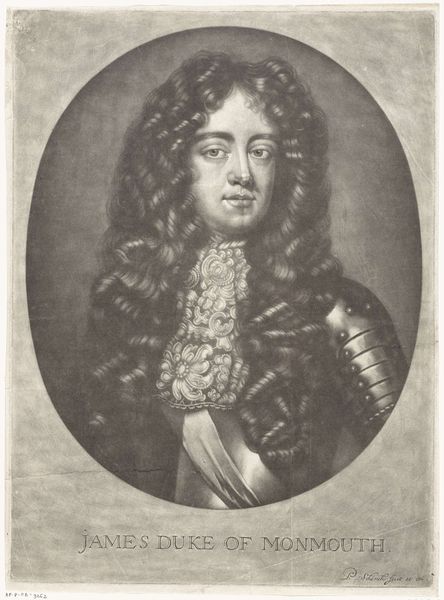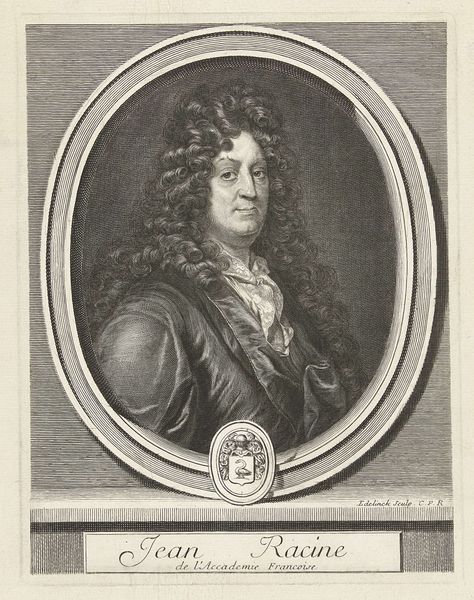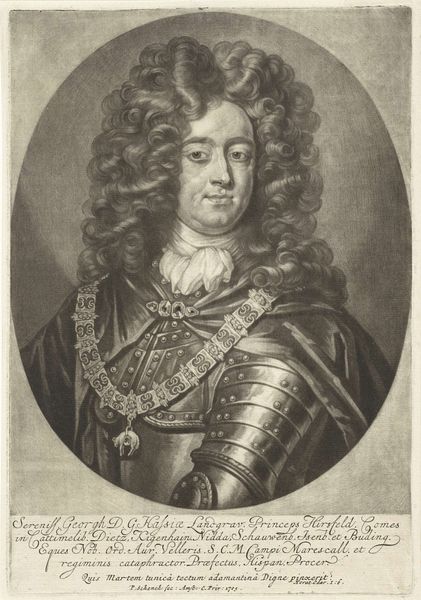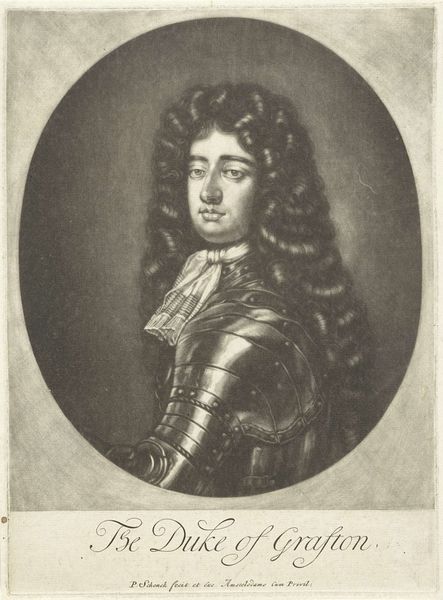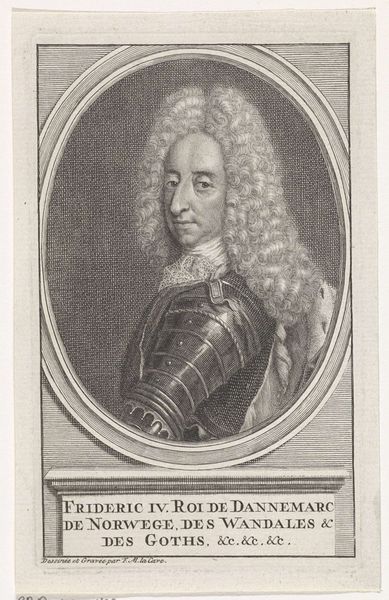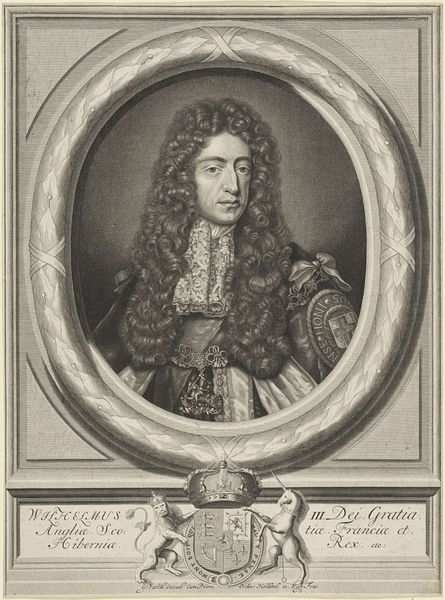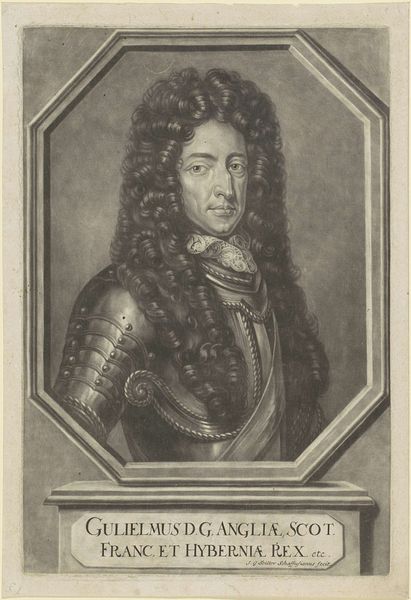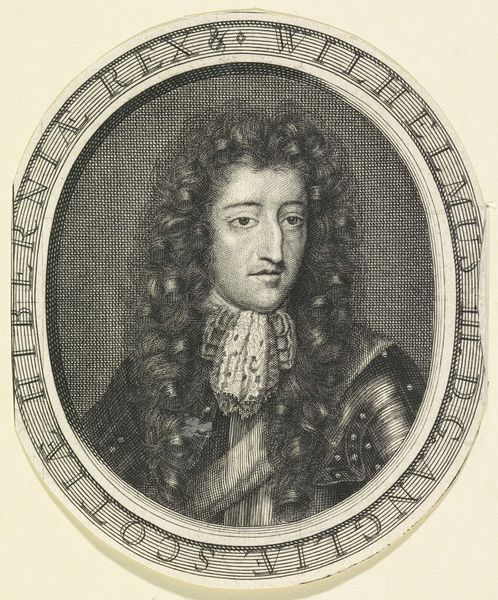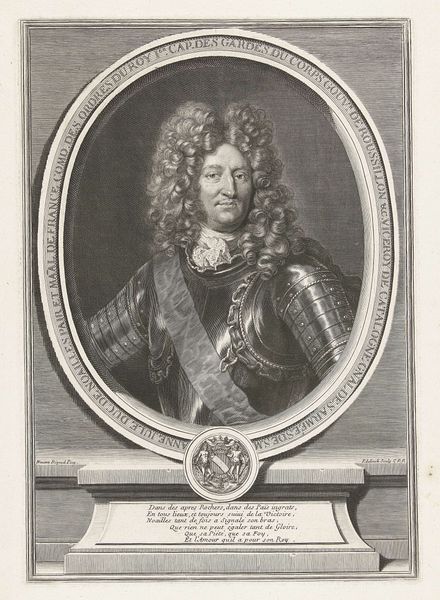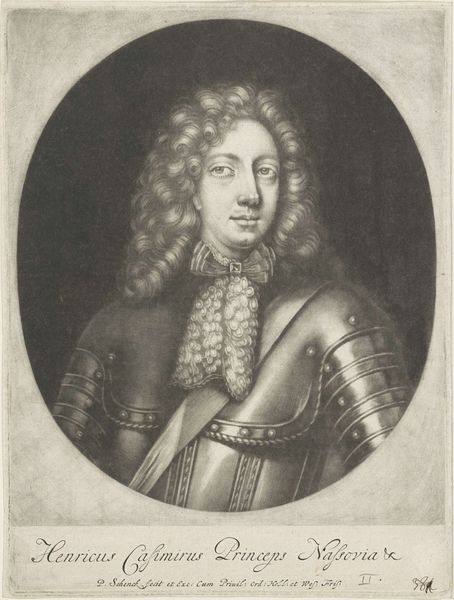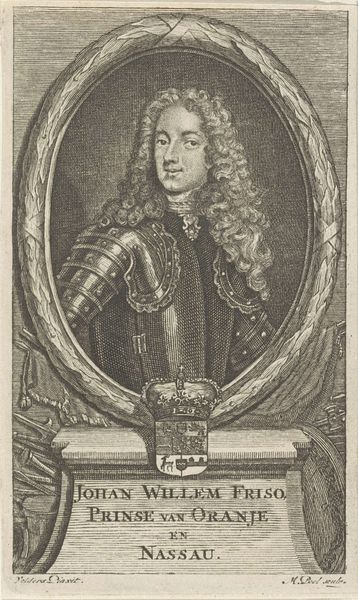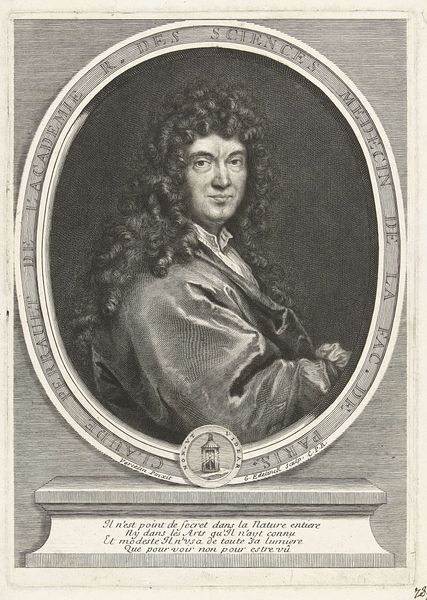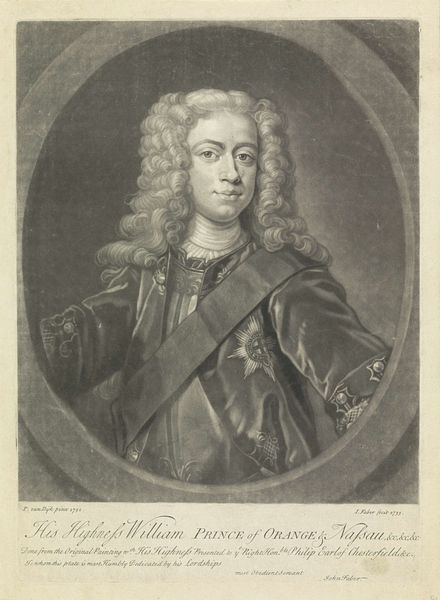
print, engraving
#
portrait
#
baroque
# print
#
old engraving style
#
historical photography
#
19th century
#
history-painting
#
engraving
Dimensions: height 211 mm, width 154 mm
Copyright: Rijks Museum: Open Domain
Editor: This engraving, "Portret van koning Peter II van Portugal" by Gėrard Edelinck, dated between 1652 and 1707, is striking. The detail achieved with the engraving medium is impressive, especially in the armor and the King's elaborate wig. How do we unpack the significance of a portrait like this in its historical context? Curator: That's a great question! It’s important to consider this image not just as a representation of power but also how that power was constructed and communicated in the late 17th century. What can we glean from his armor, for example? It speaks to his role as a military leader, of course, but beyond that? Editor: It feels symbolic, a demonstration of might, even though he's in a relatively static pose. Almost like propaganda? Curator: Precisely. And consider the baroque style—the elaborate details, the rich textures. These are visual cues designed to evoke a sense of awe and reinforce the authority of the monarchy. But, who was this authority *for*? Editor: So, the portrait isn't just a likeness; it's actively shaping a narrative of power and legitimacy for his court and beyond? Curator: Exactly! These portraits were carefully constructed to project an image, solidify a legacy, and communicate power across Europe. Think about it—how did these images function to either enforce or disrupt existing power structures of the time? How might this image play into Portugal's relationship with other colonial powers? Editor: That provides a fascinating new perspective for analyzing the portrayal of individuals like Peter II. I'll certainly view such works with much more insightful questioning going forward! Curator: Fantastic! Remember, art is always in conversation with its time, and we have a responsibility to understand that conversation in all its complexity.
Comments
No comments
Be the first to comment and join the conversation on the ultimate creative platform.
